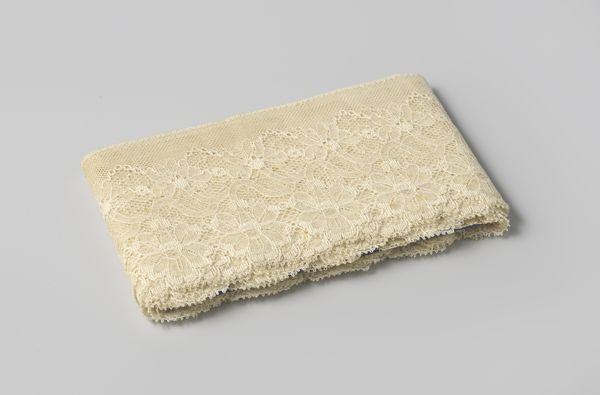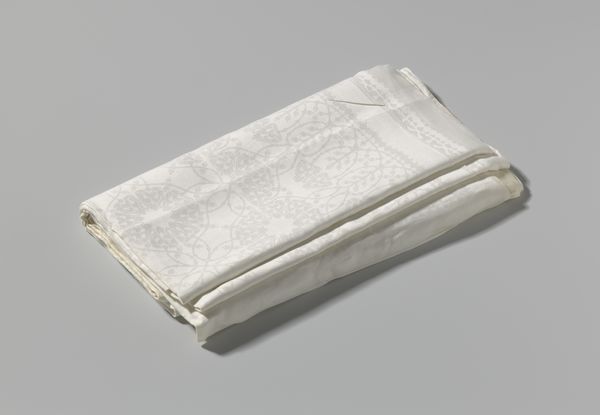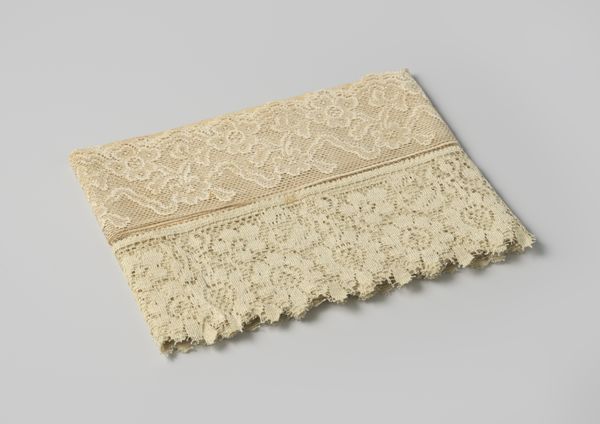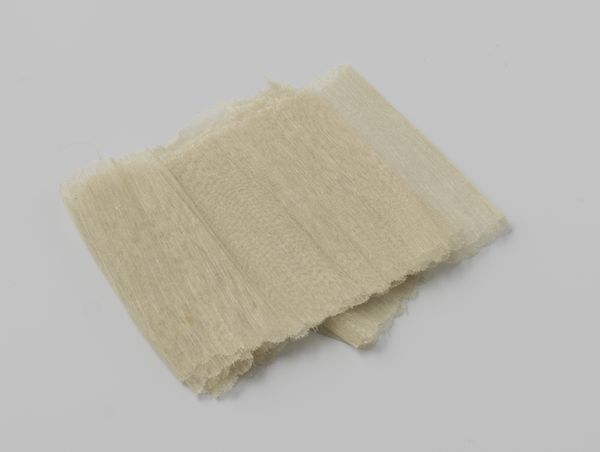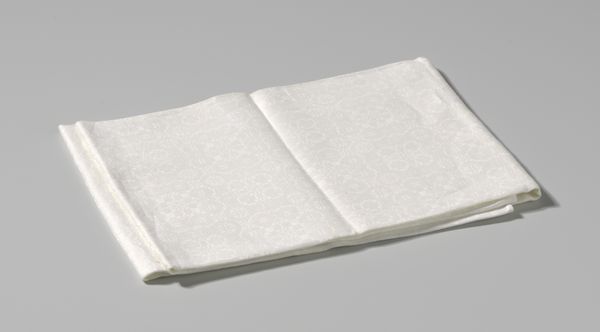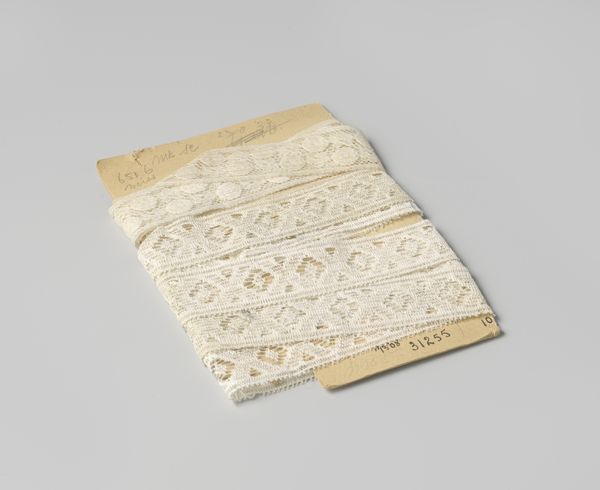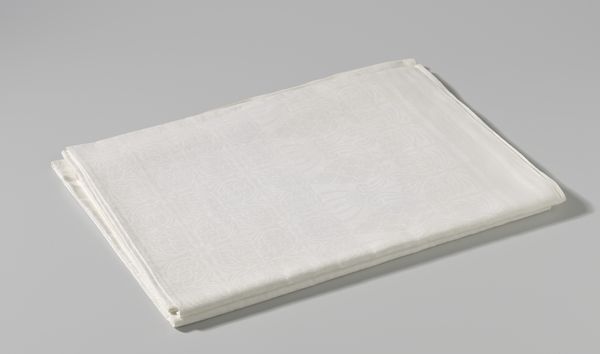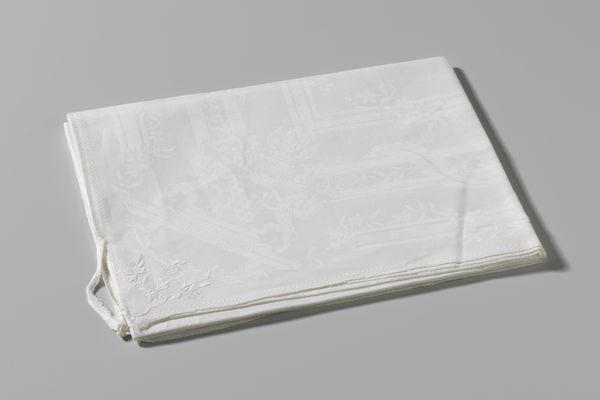
Tussenzetsel van roomwitte machinale kant met patroon van aaneengeschakelde bloemen, op karton c. 1925
0:00
0:00
Dimensions: width 4.5 cm, length 27 cm, width 18 cm
Copyright: Rijks Museum: Open Domain
This is a length of machine-made, off-white lace with a pattern of interconnected flowers, mounted on cardboard, by Gustav Schnitzler. Lace has a fascinating social history; once made by hand, it was a luxury product, and a symbol of status. With the advent of industrialisation, lace-making was mechanised. What was once a highly skilled craft became the work of machines, and a preserve of the factory. Looking at this lace, we can consider the ways in which industrial production changed social relations, and how the availability of machine-made products altered perceptions of value and artistry. If you want to find out more, research the history of textile production and labour in the Netherlands. You might consider how the institutions of art classify an object like this: is it craft, design, or something else? Because the meaning of art is always contingent on social and institutional context.
Comments
No comments
Be the first to comment and join the conversation on the ultimate creative platform.
